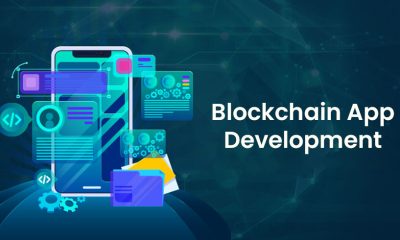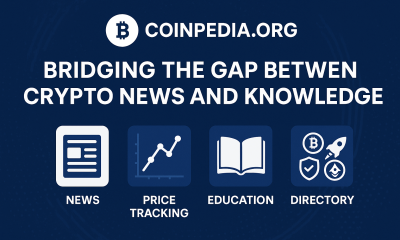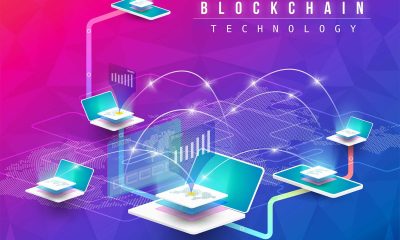Technology Explained
Real Use Cases of Blockchain Beyond Crypto in 2025

Introduction
For years, blockchain was almost exclusively associated with cryptocurrency, serving as the underlying technology for digital assets like Bitcoin and Ethereum. But in 2025, the narrative has evolved. Blockchain is now recognized as a transformative digital infrastructure, powering innovation across a wide spectrum of industries.
This article explores the most impactful, scalable, and practical uses of blockchain technology beyond cryptocurrency in 2025 showing how enterprises, startups, and governments are integrating blockchain into everyday systems.
Why Blockchain Matters Now More Than Ever
In a digital-first, trust-fragile economy, blockchain offers an unmatched combination of decentralization, immutability, and automation via smart contracts. That’s why blockchain technology and cryptocurrencies are no longer inseparable concepts. The technology has outgrown its origins.
Key advantages of blockchain:
- Decentralized control eliminates intermediaries
- Immutable records preserve data integrity
- Transparent ledgers ensure accountability
- Smart contracts automate complex workflows
- Tokenization enables traceable real-world asset ownership
As industries digitize, blockchain beyond cryptocurrency is gaining recognition as critical infrastructure.
1. Supply Chain Management: Transparency and Traceability
Blockchain applications beyond cryptocurrency are revolutionizing logistics. Supply chains involve multiple stakeholders and data handoffs—making them vulnerable to fraud, delays, and opacity.
Real-World Example: IBM Food Trust
Used by Nestlé and Walmart, it enables tracing food items from farm to shelf in seconds, drastically improving food safety and compliance.
Benefits
- End-to-end provenance of goods
- Compliance and sustainability tracking
- Real-time auditing
- Tokenized supplier credentials
2. Healthcare: Securing Patient Data and Interoperability
Unlike traditional systems that silo patient data, blockchain enables secure, portable, and interoperable electronic health records (EHRs).
Real-World Example: Medicalchain & Guardtime
These platforms give patients control over their data and enable secure sharing with healthcare providers globally.
How Blockchain Helps:
- Privacy-first, patient-owned EHRs
- Validated clinical trial data
- Counterfeit drug prevention
- Smart contract-driven insurance claims
3. Digital Identity: Self-Sovereign and Secure
Do all cryptocurrencies use blockchain? Yes—but blockchain can also exist without being tied to a currency. Digital identity is a prime example where blockchain excels independently.
Real-World Example: Microsoft ION, ID2020
Users can create decentralized identifiers (DIDs) to manage their identities across platforms.
Key Benefits:
- User-controlled credentials
- Tamper-proof identity verification
- Interoperable digital IDs
- No single point of failure
4. Decentralized Finance (DeFi): Redefining Traditional Banking
Although DeFi originated within cryptocurrency use cases, it now supports lending, insurance, and asset tokenization—without banks or brokers.
Real-World Example: Aave, Compound, Centrifuge
These platforms automate lending and investing with smart contracts and tokenize assets like real estate or invoices.
DeFi Innovations:
- Accessible global finance
- Smart, programmable contracts
- Real-asset tokenization
- Transparent, community-governed protocols
5. Intellectual Property: Rights and Royalties Reinvented
Artists and creators benefit from blockchain beyond cryptocurrency through digital rights protection, timestamped ownership, and royalty automation.
Real-World Example: Audius, Ascribe, Emanate
These platforms allow direct-to-consumer payments, NFT-based licensing, and transparent content monetization.
What Blockchain Enables:
- Automated royalty flows
- Immutable proof of creation
- Global distribution via NFTs
- Decentralized content markets
6. Real Estate: Tokenization and Transaction Efficiency
Real estate is notoriously bureaucratic and slow. Blockchain brings speed, clarity, and fractional ownership.
Real-World Example: Propy & Real
These platforms record property sales on-chain and allow fractional investing in rental properties via tokens.
Benefits:
- Fast, low-cost transactions
- Smart escrow automation
- Secure deed/title management
- Investment democratization
7. Government and Voting: Securing Democracy with Blockchain
When blockchain technology and cryptocurrencies are discussed, governance often gets overlooked. But blockchain can power secure, anonymous, tamper-proof voting systems.
Real-World Example: Voatz, Horizon State
These platforms allow overseas and domestic voters to cast secure mobile ballots.
Features:
- Verifiable vote records
- Reduced election fraud
- Higher voter participation
- DAO-style community governance
8. Education and Credentials: Verified for Life
Verifying academic qualifications manually is slow and error-prone. Blockchain simplifies it.
Real-World Example: MIT Digital Diplomas
Graduates receive a scannable, verifiable diploma stored on blockchain.
Blockchain in Education:
- Fraud-proof certifications
- Global, interoperable credentials
- Stackable micro-credentials
- Lifelong learning portfolios
9. Energy Sector: From Carbon Credits to Microgrids
Blockchain enables efficient tracking, trading, and incentives in the energy ecosystem.
Real-World Example: Power Ledger, WePower
These platforms allow users to trade surplus solar power on microgrids using blockchain tokens.
Energy Applications:
- Automated billing
- Tokenized carbon credits
- Resilient local grids
- Clean energy incentives
10. Retail and Consumer Loyalty
Retailers are using blockchain to ensure authenticity, streamline loyalty, and personalize engagement.
Real-World Example: Starbucks, Lolli
Starbucks uses blockchain to trace coffee bean origins. Lolli rewards purchases with Bitcoin.
Benefits:
- Transparent sourcing
- Redeemable loyalty tokens
- Customer-owned data
- Authenticity assurance
- Challenges to Consider
Despite its promise, blockchain isn’t a magic bullet. Common hurdles include:
- Scalability bottlenecks on public chains
- Regulatory uncertainty around cryptocurrency use cases
- Poor interoperability between blockchain networks
- Complex onboarding and wallet/key management
- Environmental impacts of proof-of-work (PoW) models
Solutions: Layer-2 scaling, proof-of-stake (PoS), user education, and cross-chain bridges.
Peer-to-Peer Energy Trading
The energy grid is evolving from centralized power plants to a mesh of small solar, wind, and storage systems. In 2025, blockchain-based marketplaces let neighbors trade surplus solar energy directly. Smart meters record production and consumption on a local blockchain. Smart contracts execute buys and sells in real time at set prices. Homeowners with extra power earn credits instead of waiting for monthly net-metering. Utilities benefit from lower peak loads and more grid resilience. Cities in Europe and Asia pilot these blockchain beyond crypto energy networks, showing a cleaner, peer-powered future.
Government and Public Services
Governments use blockchain to improve transparency and reduce corruption. In 2025, public procurement where cities buy goods and services runs on permissioned blockchains. All bids, contracts, and payments get recorded, so citizens can audit spending in real time. Welfare programs use blockchain to deliver benefits directly to recipients’ digital wallets, cutting out intermediaries. Land registries, customs records, and even professional certifications move to blockchain platforms. This digitization means fewer errors, less fraud, and faster public services in many regions.
Conclusion
In 2025, the real use cases of blockchain extend far beyond crypto trading. From supply chains that track food safety to streamlined healthcare records, digital IDs, property sales, and secure voting, blockchain’s shared ledger and smart contracts bring transparency, speed, and trust to many sectors. Artists earn fair royalties, neighbors trade energy directly, and governments fight fraud with open records. While challenges like regulation and scalability remain, early adopters prove blockchain’s value every day. As more industries embrace these blockchain beyond crypto applications, we’ll see even more innovative solutions that transform how we live and work—one block at a time.
Final Thoughts
Blockchain’s potential has only begun to be realized. What started as a ledger for Bitcoin has become a catalyst for digital trust, automation, and decentralization across sectors.
At Vasundhara Infotech, we help businesses build blockchain-powered solutions that drive transparency, security, and efficiency no matter the industry. If you’re ready to explore how blockchain can revolutionize your business model, let’s connect.
Technology Explained
Custom ERP for Fast-Growing Teams: Scaling Without Losing Control
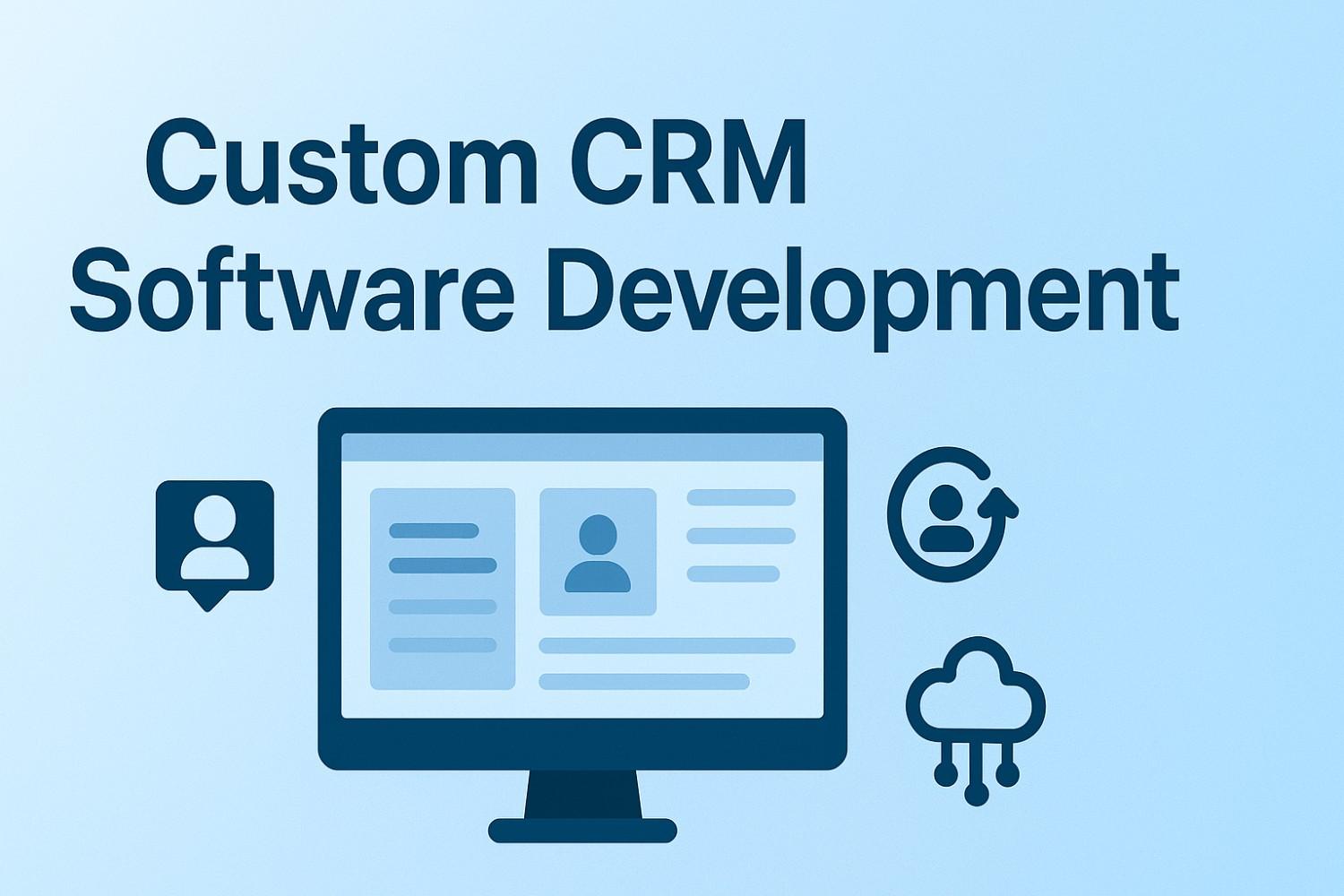
Introduction
Fast-growing teams often discover usually somewhere between onboarding the tenth new hire of the week and juggling yet another “urgent” spreadsheet—that growth comes with a surprising side effect: chaos. At Kanhasoft, we’ve seen this movie many times, and trust us, the plot never changes. Teams move fast, systems don’t, and before long, someone mutters the classic line: “We really need something smarter than this.” That’s where Custom ERP steps in like the calm friend in a group of panicked overachievers. It gives teams room to scale without tripping over their own processes. And yes, we’ve helped quite a few teams reclaim order without losing their momentum or their sense of humor.
Custom ERP for Fast-Growing Teams: What It Really Means Today
A modern Custom ERP is nothing like the heavy, inflexible systems many companies still fear. It’s tailored software built to fit a team’s real-life workflows, not the other way around. Today’s custom ERP can evolve with you, plug into your existing tools, and automate the tasks that steal time from your day. Instead of forcing a team into rigid templates, it adapts—whether you’re scaling operations, expanding departments, or opening new branches. For fast-growing teams, this flexibility becomes oxygen. With the right development approach, a custom ERP becomes more than a system; it becomes the backbone supporting daily operations without slowing growth momentum.
Where Off-the-Shelf ERP Breaks (Usually at the Worst Time)
Ready-made ERPs can be helpful until teams outgrow them, which usually happens right during budget season, busy season, or literally any unfortunate season. These systems tend to assume that every company runs the same way, and fast-growing teams quickly find those assumptions laughable. We’ve seen companies hit weird roadblocks, like needing a new workflow but discovering their ERP only allows three options unless they “upgrade” (which really means “pay more”). Worst of all, off-the-shelf tools often break integrations or slow down under heavy usage. When growth accelerates, rigidity becomes the enemy, and pre-built ERPs rarely bend without breaking something important.
Core Benefits of Custom ERP for Fast-Growing Teams
Custom ERP systems shine because they’re built around how your team actually works. They automate repetitive tasks, unify data across departments, and reduce the time wasted jumping between tools. For growing companies, this means fewer surprises and more predictable operations. Teams get real-time insights instead of outdated reports. Leaders get visibility without digging. And processes evolve smoothly, because the ERP can adapt as needs change. At Kanhasoft, we’ve seen the lightbulb moment when teams realize they can finally scale without friction. It’s not magic just the right technology aligned with the way people work.
Feature Sets That Matter When Scaling Without Losing Control
Fast-growing teams don’t just need more tools—they need smarter ones. A strong Custom ERP provides role-based access, workflow automation, integration bridges, and dashboards that don’t require a PhD to read. One of our favorites is the approval workflow engine, which prevents situations where “Bob said yes on WhatsApp,” and no one can find the message later. Audit trails help track who did what (and who didn’t). Central dashboards make it easy to monitor KPIs without bouncing between tabs. When every feature is built for how your team actually operates, the system becomes a partner in growth rather than a bottleneck.
Scaling Pains We See Every Week (And How Custom ERP Fixes Them)
At Kanhasoft, we’ve witnessed almost every scaling pain imaginable. Teams add people faster than they add structure, and suddenly, onboarding becomes a treasure hunt. Inventory updates lag behind sales. Finance and operations disagree about whose spreadsheet is “the real one.” A Custom ERP cuts through this noise by standardizing workflows and centralizing data. Automated tasks handle volume spikes without breaking a sweat. Real-time syncing prevents duplication, confusion, and finger-pointing. And because the system is built around your unique processes, it evolves as you grow—erasing the growing pains that once felt unavoidable.
How AI ERP Development Helps Teams Avoid Chaos
AI-driven ERP reduces chaos by automating the decisions that normally pile up when growth accelerates. It flags unusual patterns—like sudden order spikes or supply inconsistencies—before they derail the day. It routes approvals intelligently based on priority and workload. It even predicts operational risks so teams can act early instead of scrambling last minute. For leaders, AI ERP provides crystal-clear visibility into trends that would otherwise remain buried. For fast-growing teams juggling too many moving parts, AI adds structure, clarity, and speed. And surprisingly, it does it without complicating the workflow—just enhancing it.
The Role of Intuitive UI in Preventing Team Meltdowns
We’ve all opened software screens that felt like they were designed by someone who has never met an actual human. Fast-growing teams can’t afford that. When people are joining rapidly and processes evolve weekly, intuitive UI becomes a lifeline. A well-designed Custom ERP interface reduces training time, minimizes user errors, and keeps morale intact. We’ve even watched teams breathe a visible sigh of relief when they see dashboards that make sense without an instruction manual. Clear navigation, sensible layouts, and meaningful visuals prevent meltdowns and help new hires feel productive on day one. When the UI feels friendly, the whole system becomes easier to adopt—and easier to love.
When to Build, When to Customize, and When to Extend
Many companies struggle with the classic ERP question: build from scratch, customize an existing system, or extend what’s already there? The answer depends on how unique the processes are and how quickly the team is growing. Custom-building works best when workflows are complex or evolving rapidly. Customizing an existing ERP fits teams with predictable processes but specific needs. Extensions make sense when your current system almost works—but not quite. At Kanhasoft, we often guide teams through this decision, and the right choice usually becomes obvious after mapping goals and bottlenecks. The key is choosing the path that supports long-term scalability, not just immediate relief.
Future of Custom ERP for High-Growth Teams
The future of Custom ERP is shaping up to be smarter, lighter, and far more intuitive than anything we’ve seen before. AI will shift from assisting to anticipating—predicting resource needs, employee workloads, and operational bottlenecks before humans even sense them. Integrations will become seamless, turning ERP into a unified “command center” rather than a collection of modules. Low-code extensions will empower teams to customize workflows without calling developers every time. And with global teams becoming the norm, mobile-first design will take center stage. At Kanhasoft, we’re already exploring adaptive systems that evolve automatically as businesses scale. The future isn’t just about automation—it’s about intelligence, flexibility, and effortless growth.
Conclusion
Fast-growing teams don’t fail because they grow too fast—they struggle because their systems fail to keep up. That’s where Custom ERP becomes a game-changer. It brings structure without stiffness, automation without overwhelm, and clarity without complexity. At Kanhasoft, we’ve helped teams reclaim control, eliminate chaos, and scale with confidence. Growth should feel exciting, not exhausting—and the right ERP makes that possible. As we often say around the office, “Your team can go fast, but your system should help you go far.” When you’re ready to scale without losing your sanity, Custom ERP is the smartest ally you can bring on the journey.
Technology Explained
worldfree4u: A Compact and Convenient Path Digital Entertainment

Introduction
Digital entertainment has become a major part of everyday life. People now enjoy movies, shows, music, and games with just a tap on their phones or laptops. With this rise in online entertainment, many websites have become popular because they offer quick access to content. One name that often appears in online discussions is worldfree4u. Many people search for such platforms hoping to find free and easy entertainment. However, not everyone understands the risks, legal issues, or safer alternatives available today.
This article explains the topic in simple and clear language so everyone, including young readers, can understand how digital entertainment platforms work, the truth behind websites like worldfree4u, and the importance of choosing safe and legal options.
Understanding the Digital Entertainment World
Over the years, entertainment has moved from DVDs and cable TV to online platforms. Streaming has become the new normal because it is affordable, convenient, and offers content from around the world. Whether you enjoy movies, sports, cartoons, or documentaries, there is a platform for every interest.
The shift to digital entertainment has made it easier for people of all ages to watch what they love without leaving their homes. But with this convenience, many unofficial and unsafe websites have also appeared, trying to attract users with free content.
Rise of WorldFree4U
WorldFree4U became popular because it offered movies, TV shows, and web series online for free. Many people started using it when they realized they could watch new releases without paying for subscriptions. Its rise was especially noticeable in countries where streaming platforms are expensive or hard to access. Word spread quickly through social media and word of mouth, making the site famous among young audiences. Over time, it became known as a convenient platform for digital entertainment, offering everything from regional films to international blockbusters in one place.
What People Commonly Associate with worldfree4u
worldfree4u is known on the internet because many people talk about it when searching for entertainment without paying. It is often associated with free access to movies or series. While the name appears in searches, many users do not understand the legal and safety issues behind such websites.
Websites like these usually offer content without proper rights, meaning the material is not legally shared. This leads to risks for both the creators of the content and the people who use these websites. It is important to know what these risks are so you can make safer choices online.
Why Websites Offering Free Movies Seem Attractive
People often feel drawn to websites that promise free entertainment for many reasons:
- They want to save money
- They want quick access to new releases
- They prefer downloading content to watch offline
- They cannot find certain titles in their country
- They are unaware of legal risks
While these reasons are understandable, using unsafe websites can cause more harm in the long run. That is why it is important to understand the full picture before choosing where to watch digital content.
Benefits of WorldFree4U
One of the main benefits of WorldFree4U is that it is free. Users do not need to pay to watch movies or download them, which makes it attractive to students or people on a budget. The site also provides content in multiple languages, so viewers can enjoy movies from different regions. It is easy to use—people can watch films on phones, tablets, or laptops without complicated steps. Additionally, the platform allows viewers to access new releases very quickly, sometimes even before they appear on paid streaming platforms. For many, this speed and variety make WorldFree4U a convenient source of entertainment.
Role of WorldFree4U
WorldFree4U plays an important role in how people access entertainment online. It acts as an alternative for those who cannot afford subscriptions or do not want to wait for movies to be released on official platforms. The site has influenced media consumption habits, making instant access to movies and shows a common expectation. It also exposes users to films from different regions and genres that they might not find on mainstream platforms. In this way, it has shaped the way digital content is shared and consumed globally, showing the demand for convenience and variety in entertainment.
The Hidden Risks of Using Illegal Streaming or Downloading Websites
Websites like worldfree4u might seem convenient, but they come with several dangers that many users overlook. Here are the most common risks:
Risk 1: Legal Issues
Accessing or downloading copyrighted content from unauthorized websites can be illegal in many countries. Laws may differ, but using such platforms can lead to fines or legal trouble depending on the region.
Risk 2: Viruses and Malware
Many free movie websites contain harmful files. Clicking on the wrong button or downloading the wrong link can infect your device with viruses, which may steal your personal information or damage your files.
Risk 3: Data Theft
Some websites track user data without permission. This can expose your personal information or even lead to identity theft.
Risk 4: Poor Viewing Experience
Most illegal streaming sites are filled with pop-up ads, slow speeds, and low-quality videos. They rarely offer the safe, smooth experience that legal platforms provide.
Understanding these risks helps users make better decisions and stay safe online.
Why Legal Streaming Platforms Are the Better Choice
Legal streaming services have grown because they offer safety, quality, and convenience. Here are some reasons people prefer them:
- High-Quality Video and Audio: Legal platforms offer clear audio, high-definition video, and in some cases even 4K quality.
- No Harmful Ads: Unlike unofficial websites, legal platforms do not use pop-up ads that lead to suspicious files.
- Safe and Secure: Your data is protected, and the platforms follow strict guidelines to keep users safe.
- Wide Library of Content: Legal streaming services have hundreds of movies and shows, including new releases and exclusive originals.
- Affordable Plans: Many platforms offer budget-friendly monthly or yearly subscriptions, making them accessible for different users.
These features show why more people now prefer official streaming platforms for their daily entertainment needs.
Popular Legal Alternatives for Online Entertainment
Instead of using unsafe websites, you can choose from many legal entertainment platforms. These services give you safe access to content while supporting the creators who work hard to produce movies and shows. Some options include:
- International streaming apps
- Local on-demand platforms
- Free legal streaming services supported by ads
- Subscription-based video-on-demand platforms
You can choose the platform that fits your budget, content preference, and device type.
How to Enjoy Digital Entertainment Safely
You can still enjoy movies and shows online without exposing yourself to legal trouble or security risks. Here are some simple tips:
- Use Trusted Platforms: Always choose well-known and verified streaming apps or websites.
- Keep Your Device Updated: Updated devices are better at blocking viruses and malware.
- Avoid Suspicious Links: If a link looks odd or unfamiliar, do not click it.
- Check for Official Licensing: Legal platforms always mention their licensing agreements.
- Teach Others About Online Safety: Sharing what you know helps friends and family stay protected online. Safe viewing habits protect you from harm and make entertainment more enjoyable.
The Importance of Supporting Content Creators
Movies, shows, music, and animations take a lot of time, money, and talent to create. When people use illegal websites, creators miss out on fair earnings. This affects actors, writers, filmmakers, and even the workers behind the scenes.
Supporting legal platforms helps the entertainment industry grow. It encourages creators to produce more content, invest in better stories, and improve video quality. When you choose legal options, you contribute to a healthy and creative entertainment world.
How Technology Is Changing Entertainment Habits
Technology has changed how people watch and enjoy entertainment. Today, you can watch movies on phones, tablets, TVs, and laptops. Cloud storage, fast internet, mobile apps, and smart devices have made entertainment more accessible than ever.
These changes also highlight why users should be more careful with the websites they choose. With so many digital platforms available, safe and legal choices are both easy and convenient.
Summary of Key Points
Here is a quick look at what you learned:
- Many people search for platforms like worldfree4u because they want free content
- Such websites come with legal and safety risks
- Illegal websites can expose your device to viruses, data theft, and harmful ads
- Legal streaming platforms offer safe access, better quality, and secure viewing
- Supporting legal platforms helps content creators and the entertainment industry
- Safe viewing habits protect your devices and personal information
Challenges of WorldFree4U
Despite its popularity, WorldFree4U faces many challenges. The biggest issue is that it shares copyrighted content illegally, which makes it a target for government and legal action. Users may risk malware, pop-up ads, or unsafe downloads while using the site. The quality of some movies or shows may also be low, and servers can be slow or unstable due to high traffic. Frequent site shutdowns and changes in domain names make it hard for users to find it reliably. These challenges show that while the site is convenient, it is not completely safe or legal for viewers.
Future of WorldFree4U
The future of WorldFree4U is uncertain, mainly because of legal risks and increasing competition from affordable streaming services. Authorities are continuously trying to block or shut down illegal platforms, which may affect its availability. At the same time, its popularity highlights the ongoing demand for free and easy access to movies and shows. To survive, such platforms might need to find safer and legal ways to offer content. Alternatively, the site may continue to operate in underground or temporary forms, adapting to changing regulations and user demands. Its future depends on how it balances convenience with legality and safety.
Conclusion
Digital entertainment is a fun and important part of modern life, but it is essential to choose safe and legal ways to enjoy it. While websites like worldfree4u may seem tempting because they offer free access, they come with legal risks and security dangers that many users overlook. Choosing trusted and legal platforms not only keeps you safe but also supports the creators who bring stories and entertainment to life. With so many reliable streaming options available today, it is easy to enjoy movies and shows with peace of mind, good quality, and complete safety.
Technology Explained
Must-Have CRM Software Dashboards for Sales Teams
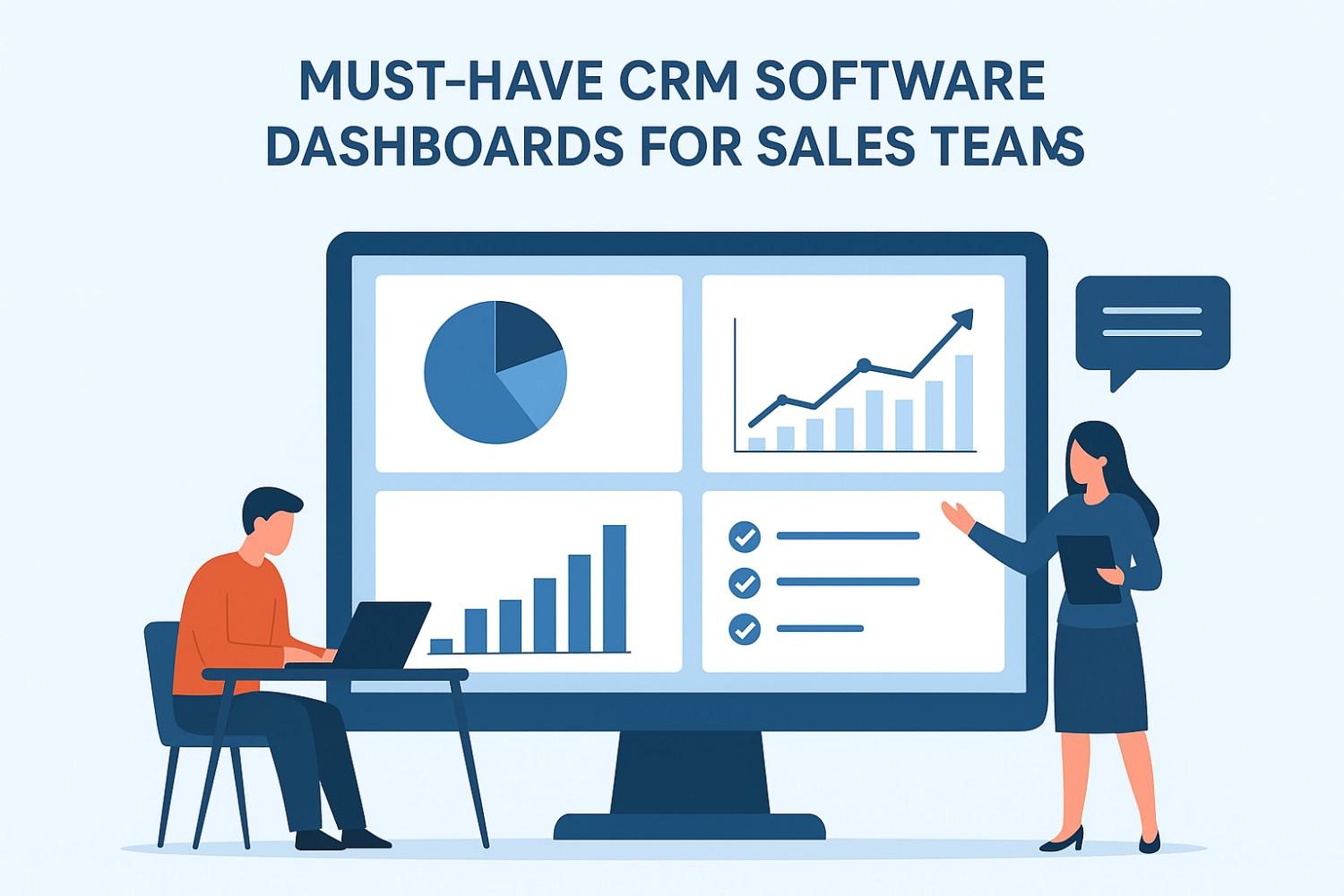
Introduction
When we talk about sales teams across the USA, UK, Israel, Switzerland, and the UAE there’s one thing they all agree on (besides the universal love for free snacks): great dashboards can make or break their day. As a seasoned CRM Software Development Company, we’ve seen it first-hand good dashboards clear the fog, great dashboards steer the ship, and terrible dashboards… well, they usually lead to someone declaring, “We need a meeting,” which is never good news for anyone.
we’re diving into the dashboards every sales team must have, the ones that keep performance transparent, pipelines visible, and frustrations at bay.
But first, a quick anecdote because, at Kanhasoft, stories fuel us almost as much as coffee. A few years ago, a sales manager asked us to build a dashboard that showed wait for it 23 metrics on a single screen. It looked like the cockpit of a space shuttle (minus the thrill of going to space). After three days of blinking at it, he finally said, “Okay, maybe we simplify.” And that, friends, is why dashboard clarity matters.
What Is a CRM Dashboard?
A CRM dashboard is a visual interface within customer relationship management software that displays important sales metrics and performance indicators in one place. Dashboards are designed to give sales teams a quick overview of their progress, pipeline, and goals. They use charts, graphs, and tables to make data easy to understand. Instead of digging through reports or spreadsheets, sales managers and team members can use dashboards to make decisions in real-time.
CRM dashboards can be customized for different roles, such as sales reps, managers, or executives, providing each user with the insights most relevant to their responsibilities.
Sales Performance Dashboard
Every morning, sales teams need a single view that tells them, “Here’s how things are going take a breath.” A solid Sales Performance Dashboard offers quick-hit insights like total sales, deals closed, targets achieved, and ongoing activities.
This dashboard works best when it feels like a quick pep talk rather than a confusing riddle. We like using clean charts, color coding (yes, red is still scary), and real-time updates. It sets the tone for the day, aligns the team, and saves managers from sending late-night “Any updates?” messages.
Pipeline Overview Dashboard: Your Sales GPS
Think of this as the North Star for sales teams. The Pipeline Overview Dashboard gives everyone from reps to executives a snapshot of what’s moving, what’s stuck, and what’s sinking into the abyss of “We’ll get back to you.”
We design this dashboard to answer questions instantly:
- What deals are in each stage?
- Who owns what?
- What needs follow-up?
- Where is revenue expected to land?
A great pipeline dashboard should almost speak for itself (preferably in a calm, soothing voice).
Lead Management Dashboard
Across industries and regions, leads behave differently—people in the UAE move fast, the Swiss prefer detail, the British appreciate precision, and Americans… well, they want it all now. So, lead tracking needs flexibility.
Our Lead Management Dashboard helps sales teams prioritize intelligently with:
- Lead sources
- Lead scores
- Last touch activity
- Follow-up reminders
- Conversion probabilities
A good lead dashboard prevents missed opportunities; a great one helps teams strike when the iron isn’t just hot but downloadable as a PDF.
Activity Tracking Dashboard: The Productivity Protector
You know how some days you feel productive but your CRM says otherwise? Yeah, we’ve all been there. This dashboard keeps things honest.
By showing calls made, emails sent, meetings booked, tasks overdue, and timelines for follow-ups it ensures every rep stays accountable. And when automation is added into the mix (something we’re huge fans of), the dashboard becomes even smarter.
Forecasting Dashboard The Crystal Ball
No dashboard gets more attention from leadership teams than the Forecasting Dashboard mainly because it tells them whether they should relax or panic.
A strong forecasting dashboard includes:
- Revenue projections
- Weighted pipelines
- Rep performance trends
- Expected close dates
- Bottlenecks impacting forecasts
We always recommend pairing historical data with current trends because while history doesn’t repeat, it does tend to rhyme (and sales patterns are no exception).
Customer Insights Dashboard
In today’s world, the teams that understand customers best win fastest. This dashboard gives sales reps an edge with:
- Purchase history
- Support tickets
- Engagement timelines
- Account value
- Upsell and cross-sell suggestions
When reps walk into a meeting with context, the conversation moves from “So, what brings you in today?” to “We noticed your team is scaling—here’s how we can support that.” It’s a smoother ride for everyone involved.
Conclusion
At Kanhasoft, we often say: A CRM dashboard shouldn’t make you think harder; it should help you think smarter. When designed intentionally clean visuals, relevant KPIs, and intuitive navigation—dashboards become more than screens. They become accelerators for revenue.
Sales teams deserve tools that reduce chaos, boost clarity, and keep everyone rowing in the same direction. And if you ever feel tempted to cram 23 metrics on one page call us first. We’ll talk you down gently.
FAQs
Q1. What makes a CRM dashboard effective?
Clear visuals, relevant KPIs, real-time updates, and easy navigation. If it requires decoding, it’s not working.
Q2. How often should sales dashboards update?
Real-time is ideal, but near-real-time (every few minutes) also works for most teams.
Q3. Can dashboards be customized for different regions?
Absolutely sales behaviors differ across countries. We tailor dashboards for USA, UK, Israel, Switzerland, UAE, and beyond.
-
Business2 years ago
Cybersecurity Consulting Company SequelNet Provides Critical IT Support Services to Medical Billing Firm, Medical Optimum
-
Business2 years ago
Team Communication Software Transforms Operations at Finance Innovate
-
Business2 years ago
Project Management Tool Transforms Long Island Business
-
Business2 years ago
How Alleviate Poverty Utilized IPPBX’s All-in-One Solution to Transform Lives in New York City
-
health2 years ago
Breast Cancer: The Imperative Role of Mammograms in Screening and Early Detection
-
Sports2 years ago
Unstoppable Collaboration: D.C.’s Citi Open and Silicon Valley Classic Unite to Propel Women’s Tennis to New Heights
-
Art /Entertainment3 years ago
Embracing Renewal: Sizdabedar Celebrations Unite Iranians in New York’s Eisenhower Park
-
Finance3 years ago
The Benefits of Starting a Side Hustle for Financial Freedom





